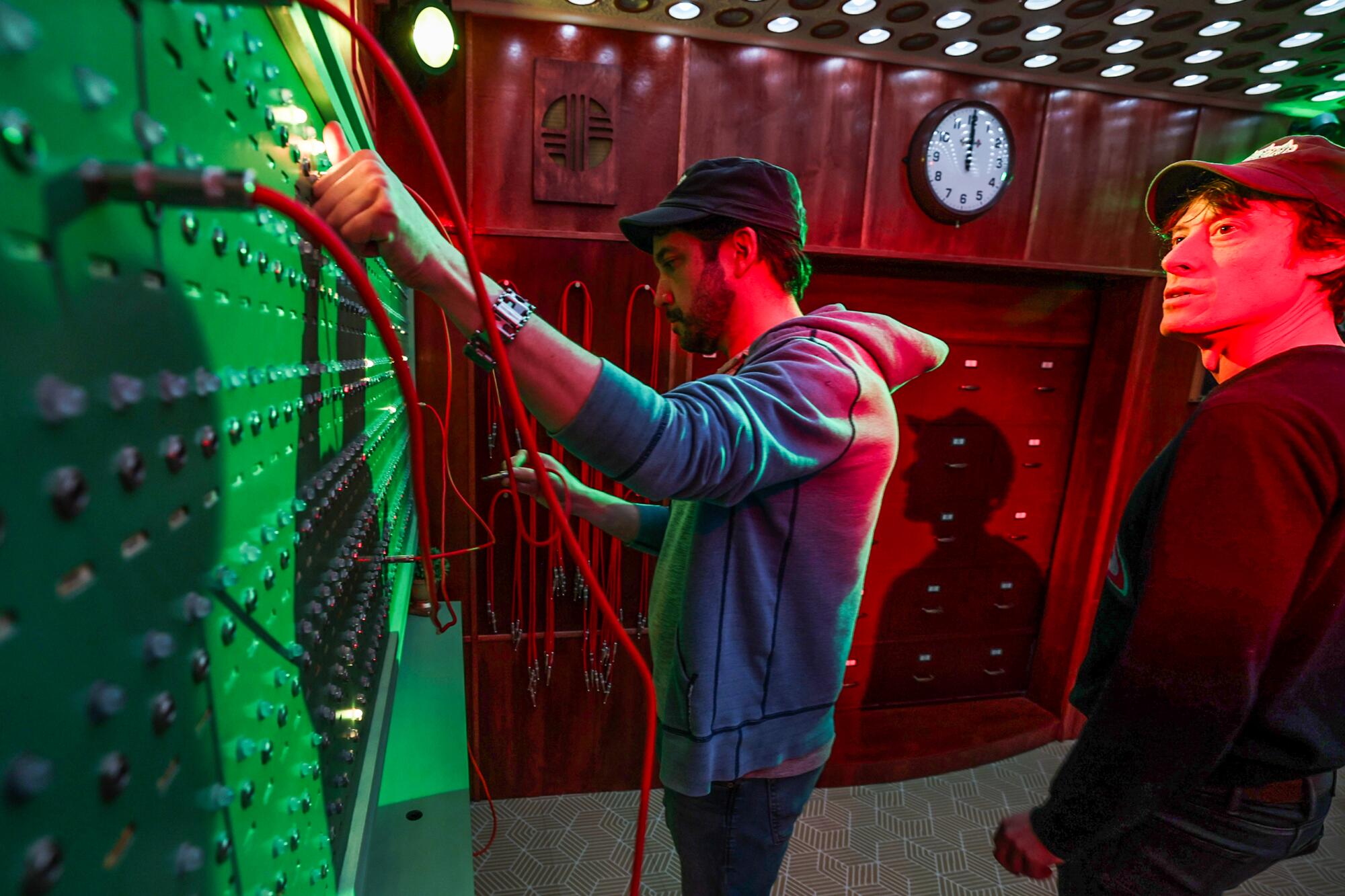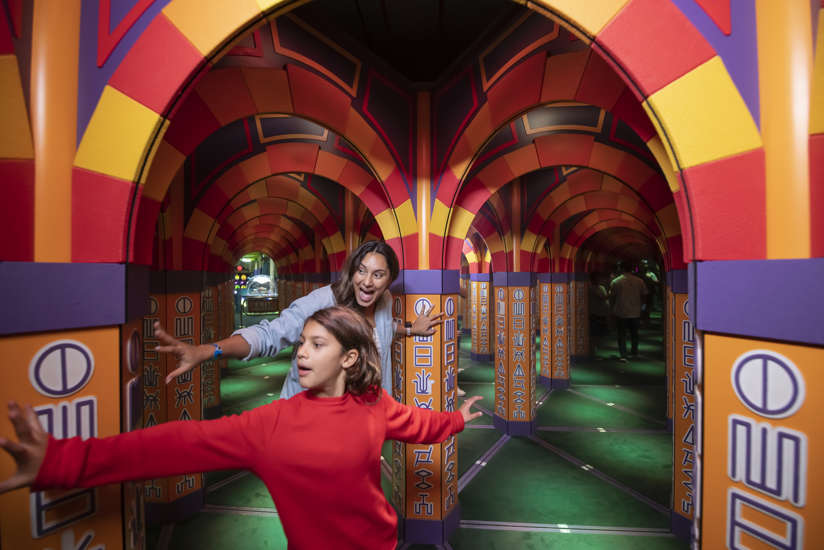An Exciting Night Out: Experience the Best Escape Room in Seattle
Wiki Article
Difficulty Your Mind With Our Intriguing Escape Room Puzzles and Clues
Getting started on a getaway space experience supplies a multifaceted experience that mixes cognitive difficulties with immersive narration. Each area, carefully crafted with unique motifs, attracts individuals right into a world where reasoning, monitoring, and physical challenges merge.The Art of Challenge Style
The art of puzzle design in getaway areas is a meticulous and imaginative process that calls for a deep understanding of both cognitive and psychological interaction. Crafting a successful problem includes stabilizing complexity with solvability, ensuring that participants remain challenged yet not overwhelmed. This balance is critical, as it fosters a feeling of accomplishment and advertises ongoing interaction.Puzzle developers have to take into consideration different cognitive abilities, such as pattern recognition, deductive thinking, and spatial understanding. These elements must be interwoven perfectly within the narrative of the getaway area, improving the immersive experience. Emotional interaction is just as crucial; puzzles need to stimulate inquisitiveness, exhilaration, and periodic frustration, motivating individuals to persist and ultimately succeed.
Focus to information is critical. Every clue, prop, and system has to be carefully made and tested to make sure performance and coherence within the story. Designers typically iterate on their developments, integrating responses from test teams to improve problem degrees and get rid of ambiguities.

Types of Escape Room Difficulties
Recognizing the details of problem design normally brings about an exploration of the varied types of obstacles come across in retreat rooms. These challenges can be generally categorized right into physical problems, reasoning challenges, and observational puzzles, each offering unique forms of involvement and cognitive stimulation.Physical problems require individuals to interact with their environment, frequently including jobs such as assembling items, controling mechanisms, or discovering hidden areas. These obstacles engage tactile senses and spatial thinking, motivating team effort and hands-on analytical.
Logic puzzles, on the other hand, demand logical thinking and pattern acknowledgment. Participants could be entrusted with deciphering ciphers, resolving mathematical issues, or locating connections in between relatively unassociated hints - best escape room. These puzzles are developed to check the gamers' deductive thinking and intellectual expertise
Empirical puzzles rely upon keen attention to detail. Players should scrutinize their surroundings to determine subtle hints, disparities, or hidden messages. These challenges usually necessitate a sharp eye and a capability to view links that others might ignore.
Strategies for Success
Achieving success in retreat spaces calls for a thoughtful mix of technique and cooperation. Synergy is paramount; players must utilize their collective strengths to resolve complicated problems effectively. Separating jobs according to private abilities can simplify the procedure-- those with a flair for pattern acknowledgment can manage aesthetic problems, while rational thinkers tackle sequences and puzzles.Efficient interaction is another foundation of success. Sharing explorations without delay makes sure and avoids duplicated efforts everybody remains on the very same page. Making use of a central area to place located items can assist track development and prevent missing critical clues.
Time management is equally crucial. Designate a particular amount of time per puzzle, staying clear of prolonged concentrate on any type of single obstacle. If progress stalls, looking for or switching over puzzles support from colleagues can offer fresh perspectives.
It's likewise useful to acquaint oneself with typical escape room motifs and problem kinds beforehand. Comprehending prospective problem styles, such as ciphers or lock combinations, can quicken analytical.
Lastly, keeping a positive and composed attitude under stress can substantially impact efficiency. Tension can cloud judgment, so keeping tranquil ensures clear thinking and efficient partnership, resulting in a higher likelihood of efficiently running away.

Benefits of Escape Rooms
Engaging in retreat spaces uses a plethora of advantages that expand past plain home entertainment. These immersive experiences act as a robust system for creating critical thinking and problem-solving abilities. Individuals are required to evaluate hints, determine patterns, and devise services under time restrictions, fostering imagination and cognitive flexibility.
Furthermore, getaway spaces are a powerful device for enhancing teamwork and interaction. The collective nature of these activities necessitates effective communication and control among employee. This environment urges individuals to express their ideas plainly, pay attention actively, and work synergistically towards a typical objective, thus reinforcing social skills.
Moreover, retreat spaces give a superb avenue for stress and anxiety alleviation and mental restoration. The gripping nature of the obstacles allows people to divert their focus from day-to-day stress factors, promoting a sense of success and wellness upon addressing the challenges. This can bring about improved mental health and raised performance in various other areas of life.
like this Lastly, these experiences frequently require creativity and resourcefulness, which can convert into cutting-edge analytic abilities in expert setups. By taking part in retreat rooms, people can develop a diverse ability that is suitable in various real-world scenarios, making them a beneficial addition to any kind of expert or personal advancement plan.
Popular Themes and Situations
Diving into the varied globe of escape rooms exposes a myriad of preferred styles and situations that mesmerize individuals and heighten the immersive experience. Among the most cherished styles are those that transport players right into historic periods or fantastical realms. For example, old Egyptian burial places, medieval castles, and pirate experiences are seasonal favorites, allowing individuals to address problems within highly comprehensive settings that evoke a feeling of experience and discovery - escape room.An additional widespread style is the enigma and investigator style, where gamers locate themselves in discover this the role of sleuths addressing a crime or discovering tricks. These circumstances usually feature complex storylines and a collection of interconnected clues that require eager monitoring and deductive reasoning to unwind.
Furthermore, sci-fi and scary motifs hold significant appeal, drawing on the intrigue of futuristic technology or the thrill of browsing haunted research laboratories and homes. These situations often incorporate special results and innovative props, boosting the realistic look and stress.
Finally, lots of getaway areas attract ideas from pop culture, producing experiences based upon beloved publications, motion pictures, or television shows. This can stimulate a feeling of familiarity and enjoyment, as participants engage with circumstances that admire their preferred stories.
Final Thought
The intricate style of escape area problems and hints supplies an one-of-a-kind blend of cognitive obstacles and immersive storytelling. By taking part in various kinds of physical, logical, and observational challenges, participants refine essential reasoning and teamwork skills. Employing reliable techniques enhances the overall experience, highlighting the diverse benefits of retreat spaces. Popular circumstances and styles additionally enhance the journey, making escape spaces a compelling and educational activity for boosting mental acuity and problem-solving capacities.Each space, carefully crafted with unique themes, draws individuals into a globe where reasoning, monitoring, Get More Info and physical challenges merge.The art of challenge style in escape spaces is a creative and thorough procedure that needs a deep understanding of both cognitive and emotional involvement. Crafting a successful challenge involves balancing complexity with solvability, making certain that participants remain challenged yet not overwhelmed. The gripping nature of the challenges allows individuals to divert their emphasis from daily stressors, advertising a sense of success and wellness upon fixing the problems.The intricate design of getaway area problems and clues provides a distinct mix of cognitive challenges and immersive storytelling.
Report this wiki page